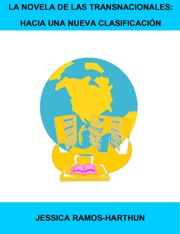LibraryHumanitiesLanguage, Literature & Linguistics
La Novela de las Transnacionales
Hacia Una Nueva Clasificación
| Institution: | The University of Alabama Tuscaloosa |
|---|---|
| Advisor(s): | Constance G. Janiga-Perkins, Ph.D. |
| Degree: | Ph.D. |
| Year: | 2001 |
| Volume: | 196 pages |
| ISBN-10: | 1581122403 |
| ISBN-13: | 9781581122404 |
Abstract
(Complete work in Spanish) This study proposes a new genre: La novela de las transnacionales, which is derived from regrouping several types of novels within the category of the Novela Social of “tendencia antiimperialista”.
The key element of this work is to identify the basic characteristics of form and content that allow the definition of this new classification. Acknowledging the fact that there are a great number of novels that address -to varying degrees- the topic of the transnational companies (TNCs), this work is based on three representative novels that comprise the subject as it is developed in an evolutionary manner: El tungsteno (1931) by César Vallejo; Mancha de aceite (1935) by César Uribe Piedrahita; and La trilogía bananera (Viento fuerte 1949; El Papa Verde 1954; and Los ojos de los enterrados 1960) by Miguel Ángel Asturias.
The first work is considered a proletarian novel; the second is viewed as the first Venezuelan novel that relates to the oil industry; and the last is classified as a fictionalized account of the United Fruit Company in Guatemala. Despite these specific definitions being noted, there exists a category that unites the three novels, the “tendencia antiimperialista”. Despite the fact that this term is used when applied to novels concerned with the topic of TNCs, this category is of a general nature and embraces a wide range of novels.
Although the importance of the topic of the TNCs is evidenced through its extensive usage by novelists, studies on this topic are scarce. Formalist criticism has minimized the value of the TNC related novel with respect to its significant content, which lies within the faithful reflection of the Latin-American man and his circumstances.
This work is structured around five chapters. In the first chapter, the story of the TNCs is analyzed, as well as the origins of this topic in the novel. The second chapter examines the biographical background of the three selected writers. In the third, fourth and fifth chapters the form and content of the three exemplary novels are examined.

